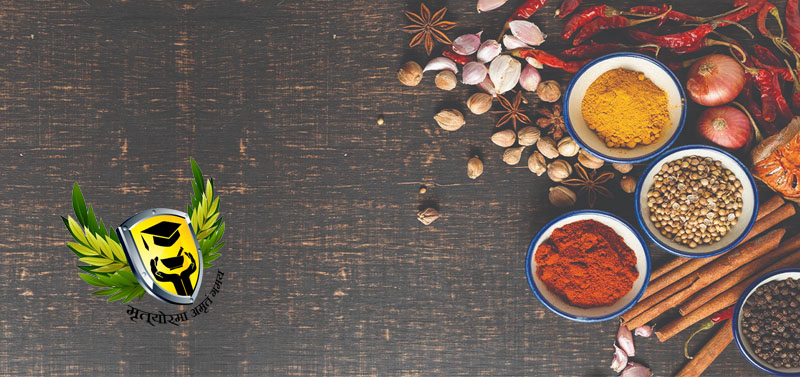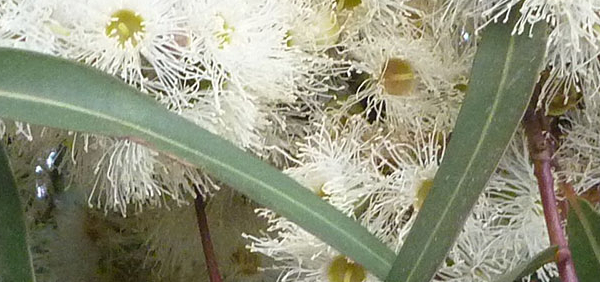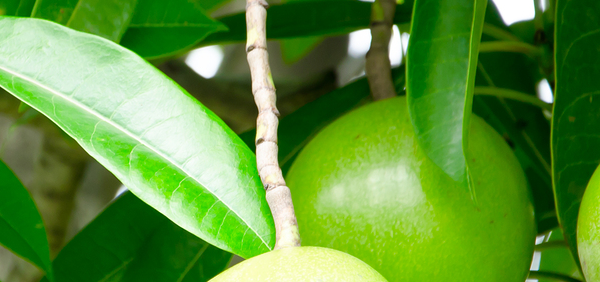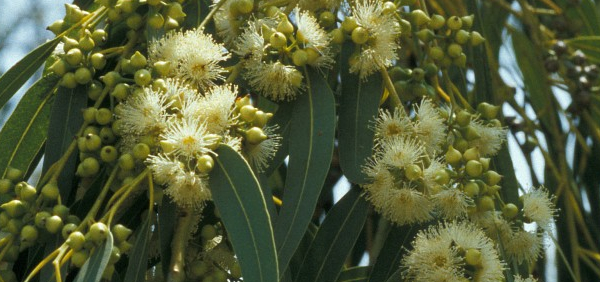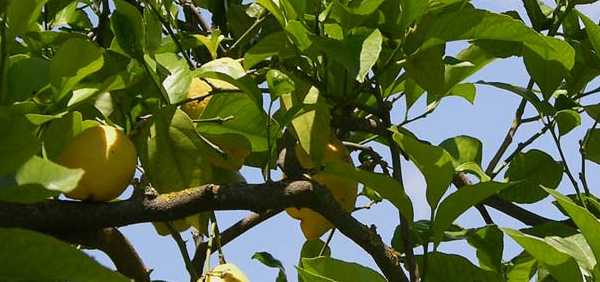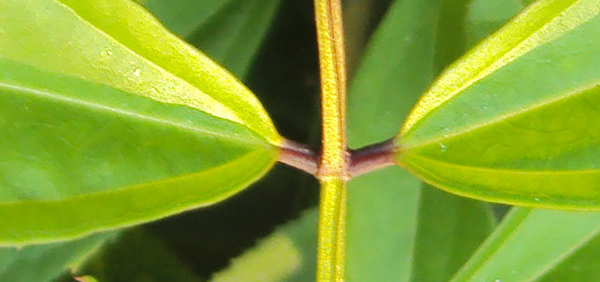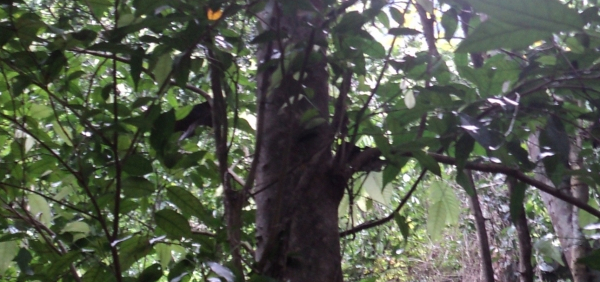musta :
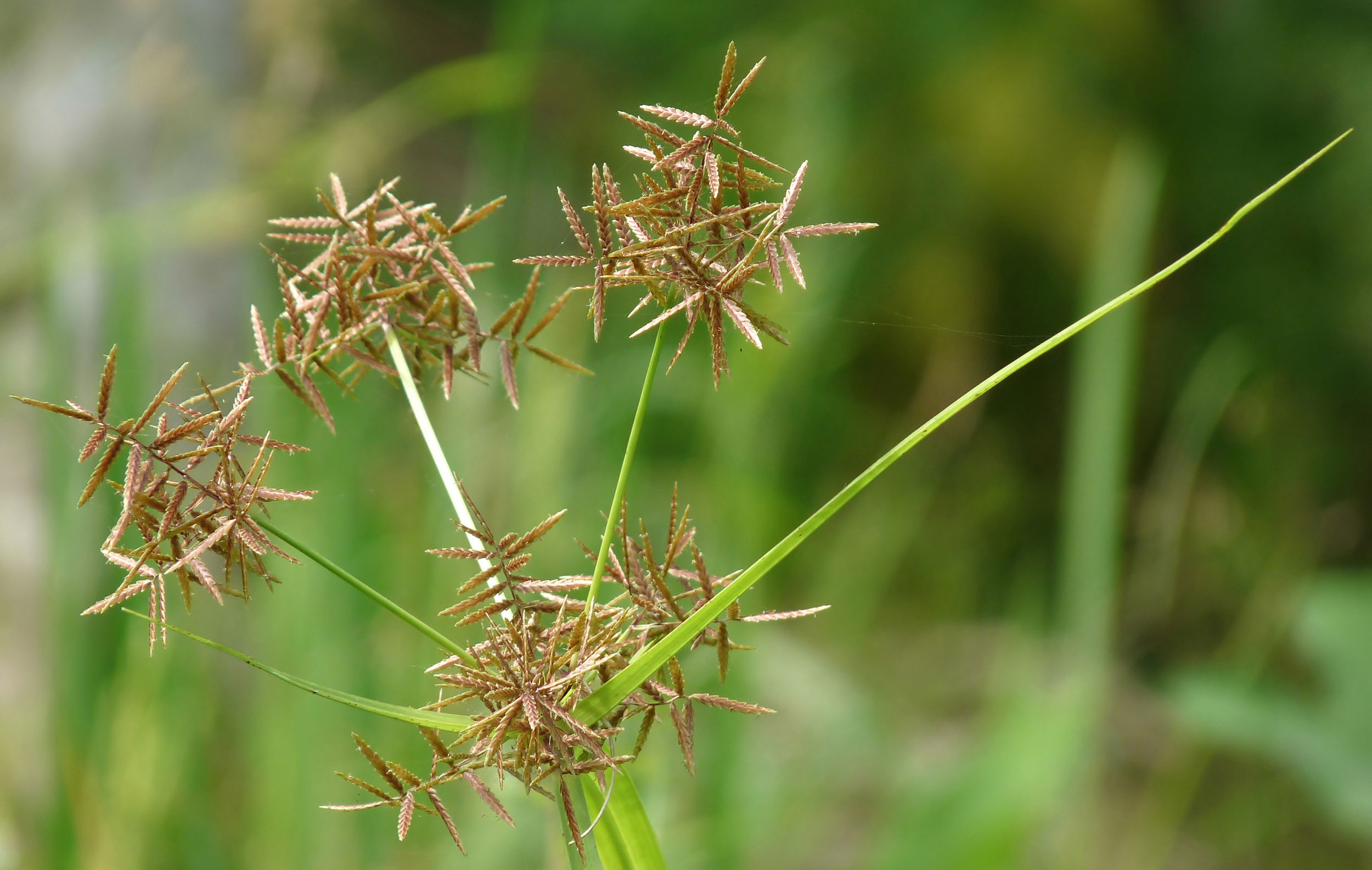
Musta (Cyperus rotundus Linn.) belongs to the family Cyperaceae.
It is perennial herbs, 10-75 cm height.
It is found throughout India up to an elevation of 1800 m., from Kashmir to Simla, Garhwal and Khasia hills, throughout the plains of almost all the states and ascending the mountains of the Central table- land from Mount Abu and Pune to the Nilghiri hills.
It is perennial weed, thrives on all kinds of soils under varying climatic conditions.
Regeneration is mainly through underground rhizomes .
HISTORICAL AND MYTHOLOGICAL REVIEW:
C. rotundus was part of a set of starchy tuberous sedges that may have been eaten by Pliocene hominins. It was a staple of Aboriginal populations in Central Australia.
Biomarkers and microscopic evidence of C. rotundus are present in human dental calculus found at the Al Khiday archaeological complex in central Sudan dating from before 6700 BC to the Meroitic pre-Islamic Kingdom of 300–400 AD. It is suggested that C. rotundus consumption may have contributed to the relatively low frequency of dental caries among the Meroitic population of Al Khiday because of its ability to inhibit Streptococcus mutans
C. rotundus was employed in ancient Egypt, Mycenean Greece, and elsewhere as an aromatic and to purify water. It was used by ancient Greek physicians Theophrastus, Pliny the Elder, and Dioscorides as both medicine and perfume
Taxonomical Classification
Kingdom: Plantae - Plants
Subkingdom: Tracheobionta - Vascular plants
Superdivision: Spermatophyta - Seed plants
Division: Magnoliophyta - Flowering plants
Family: Cyperaceae
Genus: Cyperus
Species: Cyperus rotundus
Allied species:
-
Cryptocoryne spiralis
VERNACULAR NAMES
Sanskrit: Mustaka, Krodeshta, Hima, Varida, Megha, Raja Kaseruka, Abda, Ambhoda
English: nut grass , Purple Nutsedge, Java-grass, Coco-grass, Sweet Cyperus
Hindi: Motha, nagarmotha
Urdu: Sad kufi, Habu-ul-zillam, Nagarmotha, Dheela, Mork, Motha
Telugu: Bhadra-tunga-mustalu
Bengali: Mutha, Badhail, Bedalle, Dila Motha, Nagarmuta
Marathi: Barik motha, Bimbal, Nagarmotha
Oriya: Mutha
Gujarathi: Motha
Tamil: Korai kilangu
Malayalam: Muttanga
Kannada: Tunge-gadde
Punjabi: Mutha, Motha
Arabic: so ad kufi
Spanish: Castañuela,
Mexican: Cebollin, Pimientillo
Assamese: Keyabon
Japanese: Hamasuge
Chinese: xiang fu, Suo cao, Hsiang-fu, Xiang tou cao, Xiang fu zi.
French: Herbe-à-oignon, Souchet à tubercules, Souchet rond, Souchet dAsie,
German: Rundes Zypergras, Knolliges Zypergras
Burma: Monhnyin-bin
Nepal: Mothe
Persian: Mushkok, Sad Kufi
Sinhalese: Kalanthi
Greek: Kupere
Varities:
early Ayurvedic texts mentioned two varieties “
- Nagara musta
- Bhadra musta
” which were later identified respectively as Cyperus scariosus R. Br. and Cyperus rotundus L.
Definition
मुस्तकं न स्त्रियां मुस्तं त्रिषु वारिदनामकम् |
कुरुविन्दश्च संख्यातोऽपरः क्रोडकसेरुकः |
भद्रमुस्तञ्च गुन्द्रा च तथा नागरमुस्तकः ||७७||
मुस्तं कटु हिमं ग्राहि तिक्तं दीपनपाचनम् |
कषायं कफपित्तास्रतृड्ज्वरारुचिजन्तुहृत् ||७८||
अनूपदेशे यज्जातं मुस्तकं तत्प्रशस्यते |
तत्रापि मुनिभिः प्रोक्तं वरं नागरमुस्तकम् ||७९||
Synonyms
Synonyms in Ayurveda: mustak, jalada, nagarmusta, ghan, shishira, bhadra, gudagranthi, sugandhi, hima, balahak, varid, gundra,bhadramusta, kurubilva, ambuda
मुस्तकं न स्त्रियां मुस्तं त्रिषु वारिदनामकम् |
कुरुविन्दश्च संख्यातोऽपरः क्रोडकसेरुकः |
भद्रमुस्तञ्च गुन्द्रा च तथा नागरमुस्तकः ||७७||
Rasa:
Kashaya Katu Tikta
Guna:
Laghu Ruksha
Veerya:
Sheetha
Vipaka:
Katu
Karma:
Kaphapittasamaka
This plant shows contraceptive, demulcent, emmenagogue, analgesic, astringent, antispasmodic, antibacterial, carminative, emollient, febrifuge, immune-stimulant, laxative, stimulant, tonic, vermifuge, anti-candida, anti-inflammatory, anti-diabetic, anti-diarrheal, cyto-protective, anti-mutagenic, antibacterial and antioxidant properties.
Cultivation:
Cyperus rotundus is one of the most invasive weeds known, having spread out to a worldwide distribution in tropical and temperate regions. It has been called "the worlds worst weed"
The difficulty to control it is a result of its intensive system of underground tubers, and its resistance to most herbicides. It is also one of the few weeds that cannot be stopped with plastic mulch.
Propogation:
Cyperus rotundus mainly reproduces by rhizomes and tubers. Hundreds of tubers can be produced in one season at the tips of the rhizome. Tubers require a chilling period to break dormancy and produce a primary basal bulb 1-2 cm (0.39 - 0.78 inch) beneath the soil surface.
Harvesting:
Flowering Period
Summer until autumn.
Seeds
Germination predominantly in spring and summer
.
Phytochemistry:
Volatile Oil
Phytochemical studies have shown that the major chemical components of Motha herb are essential oils, flavonoids, terpenoids, and mono sesquiterpenes. The plant contains the following chemical constituents; cyprotene, acopaene, cyperene, aselinene, rotundene, valencene, cyperol, gurjunene, trans‑calamenene, dcadinene, gcalacorene, cadalene, amuurolene, gmuurolene, cyperotundone, mustakone, isocyperol, acyperone (Meena et al., 2010). 4, 11‑selinnadien‑3‑one and 1, 8‑cineole (Visetson et al., 2001). The oil of C. rotundus was mainly composed of cyperol, α‑cyperene, rotundine, α‑cyperone, α‑copaene, valerenal, myrtenol, β‑pinene, α‑pinene and α‑Selinene, sesquiterpene hydrocarbons (Caryophyllene
PHARMACOLOGY:
IMPORTANT FORMULATIONS –
v Mustakarishta
v Mustakadi kwatha
v Asokarishta
v Mustakadi curna
v Mustakadi lehya
v Shadanga paneeya
v Chandraprabha vati
v Mahalakshadi taila
v Yogaraja guggulu
Parts used for medicinal purpose
Underground rhizomes,
,
Dosage:
3-6 g. (Powder).
20-30 ml. (Kwatha)
Antidote:
-
It is used as a reliable antidote for all kinds of poisons.
Substitute:
Musta is a substitute for Aconitum heterophyllum
Cyperus scariosus and C. arundinaceae are used as a substitute for musta
Adultrants:
C. scariosus
Cryptocoryne spiralis
Controversy:
-
There is some controversy regarding its botanical identity largely because early Ayurvedic texts mentioned two varieties "Nagara musta and Bhadra musta" which were later identified respectively as Cyperus scariosus R. Br. and Cyperus rotundus L. (Sastry, 2005). The work of Kaviraj Govind Das Sen of 17-18th centuries entitled "Bhaisajya Ratnavali", states that "Musta ca Ativisha abhave", which literally means that Musta can be used as a substitute of Ativisha (Mishra, 2007). In fact it has been accepted by Ayurveda that Musta is a substitute (Abhava Pratinidhi Dravya) for Ativisha(Venkatasubramanian et al., 2010). However their bioequivalence has not been scientifically validated or published. It was also indicated that the roots of Cryptocoryne spiralis (Retz.) Fischer ex Wydler can be used as a substitute of Ativisha (Anandakumar et al., 1982), although it was recommended to the contrary (Sastry, 2005). Since the annual demand for Ativisha has reached over 200 t with a cost of US$ 73.62/kg, (Ved & Goraya, 2008) markets, especially in south India, substitute Ativisha with known and unknown substitutes and adulterants, which include among others C. scariosus, C. rotundus, and Cryptocoryne spiralis. Hence, it is necessary to study the pharmacognosy of authentic field collections to establish quality standards to distinguish the genuine from substitute/adulterants of Ativisha. It is also necessary to find out the extent of similarity between the genuine and the substituted/adulterated samples, in order to understand the legitimacy behind substitution.Commercial value:
Cyperus rotundus is one of the most invasive weeds known, having spread out to a worldwide distribution in tropical and temperate regions. It has been called "the worlds worst weed"
Morphology:
Drug consists of rhizome and stolon having a number of wiry roots,
stolon 10-20 cm long having a number of rhizomes,
crowded together on the stolons,
rhizomes bluntly conical and vary in size and thickness,
crowned with the remains of stem and leaves forming a scaly covering, dark brown or black externally,
creamish-yellow internally; odour, pleasant
Histology:
Rhizome shows single layered epidermis, followed by 2-6 layers,
suberised sclerenchymatous cells; epidermis and outer sclerenchymatous layers filled with dark
brown content;
ground tissue of cortex consists of circular to oval, thin-walled, parenchymatous cells with small intercellular spaces; a few fibro-vascular bundles
present in this region;
endoderm is distinct and surrounding the stele;
wide central zone beneath endodermis, composed of circular to oval, thin-walled, parenchymatous cells with intercellular spaces, numerous collateral, closed,
vascular bundles surrounded by bundle sheath, scattered in this region; vessels narrow having simple reticulate, and
scalariform thickening and oblique pore;
simple round to oval starch grains measuring 6-28 µ in dia., a number of pigmented cells filled with reddish-brown content,
present throughout the cortex and stele.
Geographical distribution:
It is extensively distributed due to its ability to adapt wide range of soil types, temperatures, soil pH, altitudes and moisture levels. This plant grows in small clumps up to 100cm high.
It is the native of India.
Mustaka is found mostly all over the India, also in tropical and subtropical regions of Africa, southern Asia, southern and central Europe.
ECOLOGICAL ASPECT:
It is a major weed near cultivated crops and in. It is encouraged by frequent cultivation and grows best in moist fertile soils. It doesnt grow well in the shade. Prevalent in disturbed areas and lawns. Very persistent once established.Plant conservation:
Its existence in a field significantly reduces crop yield, both because it is a tough competitor for ground resources, and because it is allelopathic, the roots releasing substances harmful to other plants
status - least concern
General Use:
Nut grass or musta is great for your digestive and urinary system. It fights metabolic disorders like diabetes and inflammatory conditions like rheumatoid arthritis. It can also help you manage weight and fight obesity. Musta is also being explored for treating epilepsy, Alzheimers disease, and even cancer
Therapeutic Uses:
- It is acts as analgesic, astringent, antispasmodic, antibacterial, carminative, emollient, anti-inflammatory, anti-diabetic, anti-oxidant and more. It shows effect on various ailments.
- Mustaka is used in treating skin diseases ailments like eczema, scabies and itching.
- Helpful in treating eye disorders such as eye pains, redness of eye, conjunctivitis and ocular discharges.
- Helps to burn fat so helps to reduce fat deposition in obese people.
- Enhances the size of the breast.
- Normalizes the menstrual problems like irregularities.
- Improves digestive system, removes toxins and worms from gastrointestinal tract and purifies the blood.
- Treats ulcers.
- It is a nerve relaxant and helps to treat diseases like psychosis, epilepsy and mental health problems.
- Effective in the cases of vomiting, diarrhea and dyspepsia.
- Regulates the body temperature.
- Treats asthma and cough.
- Helps to pacify liver, spleen and pancreas.
Systemic Use:
Trishna nigraha
Stanya shodhana
Lekhaniya
Kandugna
Administration:
powder
Decoction
the daily intake of Mustha root powder (1 gram, three times a day) and Ashwagandha powder (1 gram, two times a day) shows good result in rheumatoid arthritis.
Pharmacological:
1. Antidiarrhoeal activity
2. Antiinflammatory activity
Antibacterial, antifungal and analgesic activities of ethanolic extract of C. rotundus rhizomes were reported
4. Cytotoxic activity
- The essential oil of C. rotundus obtained from the rhizomes by hydro distillation was also tested for cytotoxic activity against human tumor cell lines (U 251 and Hela), and Ehrlich ascites carcinoma cells.
5. Antioxidant activity
6. Antiallergic activity
- Release of histamine and β-hexosaminidase by degranulation during an allergic reaction can be used as a biomarker of allergic response of mast cells.
7. Activity on central nervous system
8. Antiplatelet activity
9. Antiobesity and the antihyperlipidemic activity
10. Insecticidal and plasmodicidal activity
Clinical trials:
1. Cyperus rotundus L.: Traditional uses, phytochemistry, and pharmacological activities Author links open overlay panelArslan MasoodPeerzadaaHafiz HaiderAlibMuhammadNaeemaMuhammadLatifaAsad HussainBukharidAsifTanveerc
2. A review on Cyperus rotundus A potential medicinal plant iosrphr.org/papers/v6i7V2/E06723248.pdf
by AE Al-Snafi
Research:
1. AN OVERVIEW OF NUT GRASS (CYPERUS ROTUNDUS) WITH SPECIAL REFERENCE TO AYUSH by Thomas M Walter
2. Medicinal uses and Pharmacological activities of Cyperus rotundus Linn www.ijsrp.org/research-paper-0513/ijsrp-p17124.pdfby SR Sivapalan
3. Uddin SJ, Mondal K, Shilpi JA, Rahnan MT. Antidiarrheal activity of Cyperus rotundus. Fitoterapia 2006.
4. Gupta MB, Palit TK, Singh N, Bhargava KP. Pharmacological studies to isolate the active constituents from Cyperus rotundus possessing anti-inflammatory, anti-pyretic and analgesic activities. Indian Journal of Medical Research 1971.
Precautions:
Pregnancy and breast-feeding: Not enough is known about the use of purple nut sedge during pregnancy and breast-feeding. Stay on the safe side and avoid use.
Bleeding disorders: Purple nut sedge might slow blood clotting. This might increase the risk of bruising or bleeding in people with bleeding disorders.
Slow heart rate (bradycardia): Purple nut sedge might slow down the heartbeat. This could be a problem in people who already have a slow heart rate.
Diabetes: Purple nut sedge might lower blood sugar levels. People with diabetes should monitor their blood glucose levels closely. If you have diabetes, it’s best to check with your healthcare provider before starting purple nut sedge.
Gastrointestinal tract blockage: Purple nut sedge might cause “congestion” in the intestines. This might cause problems in people who have a blockage in their intestines.
Stomach ulcers: Purple nut sedge might increase secretions in the stomach and intestines. There is concern that this could worsen ulcers.
Lung conditions: Purple nut sedge might increase fluid secretions in the lung. There is concern that this could worsen lung conditions such as asthma or emphysema.
Seizures: There is concern that purple nut sedge might increase the risk of seizures.
Surgery: Purple nut sedge might lower blood sugar or slow blood clotting. There is some concern that it might interfere with bleeding or blood sugar control during surgery. Stop using purple nut sedge at least 2 weeks before a scheduled surgery.
Urinary tract obstruction: Purple nut sedge might increase secretions in the urinary tract. There is concern that this could worsen urinary obstruction.
Toxicity studies:
excess use may cause constipation
-It isn’t known if purple nut sedge is safe or what the possible side effects might be.
Use in other system of medicine:
In traditional Chinese medicine, C. rotundus is considered the primary qi-regulating herb.
The plant is mentioned in the ancient Indian ayurvedic medicine Charaka Samhita (circa 100 AD). Modern ayurvedic medicine uses the plant, known as musta or musta moola churna, for fevers, digestive system disorders, dysmenorrhea, and other maladies.
Arabs of the Levant traditionally use roasted tubers, while they are still hot, or hot ashes from burned tubers, for wounds, bruises, and carbuncles.Western and Islamic herbalists including Dioscorides, Galen, Serapion, Paulus Aegineta, Avicenna, Rhazes, and Charles Alston have described its use as a stomachic, emmenagogue, and deobstruent, and in emollient plasters
The antibacterial properties of the tubers may have helped prevent tooth decay in people who lived in Sudan 2000 years ago. Less than 1% of that local populations teeth had cavities, abscesses, or other signs of tooth decay, though those people were probably farmers (early farmers teeth typically had more tooth decay than those of hunter-gatherers because the high grain content in their diet created a hospitable environment for bacteria that flourish in the human mouth, excreting acids that eat away at the teeth).
CONCLUSION:
Musta (Cyperus rotundus) is considered one of the best Ayurvedic herbs for promoting healthy, regular menstruation. It regulates both pitta and vata in the lower abdomen supporting a comfortable, natural flow. Soothing to the mind, musta helps balance the emotions in the days prior to and during menstruation. It also promotes breast comfort and helps maintain a healthy balance of fluids in the body. Mustas ability to promote lower abdominal comfort also includes the GI tract. Without aggravating pitta, it strengthens digestion, eliminates natural toxins, and supports proper function of the liver. Musta promotes healthy absorption, well-formed stools, and the metabolism of fat. Its cooling and cleansing action also supports healthy skin and helps maintain a normal body temperature.
Ayurvedic Formulations:
Common Ayurvedic Formulations of musta with their Indications
Bahushala Guda Brahma Rasayana Lala Dawasaz Herbal Hair Oil Hairvit Oil
KEY WORDS: Musta, Cyperus rotundus Linn.






